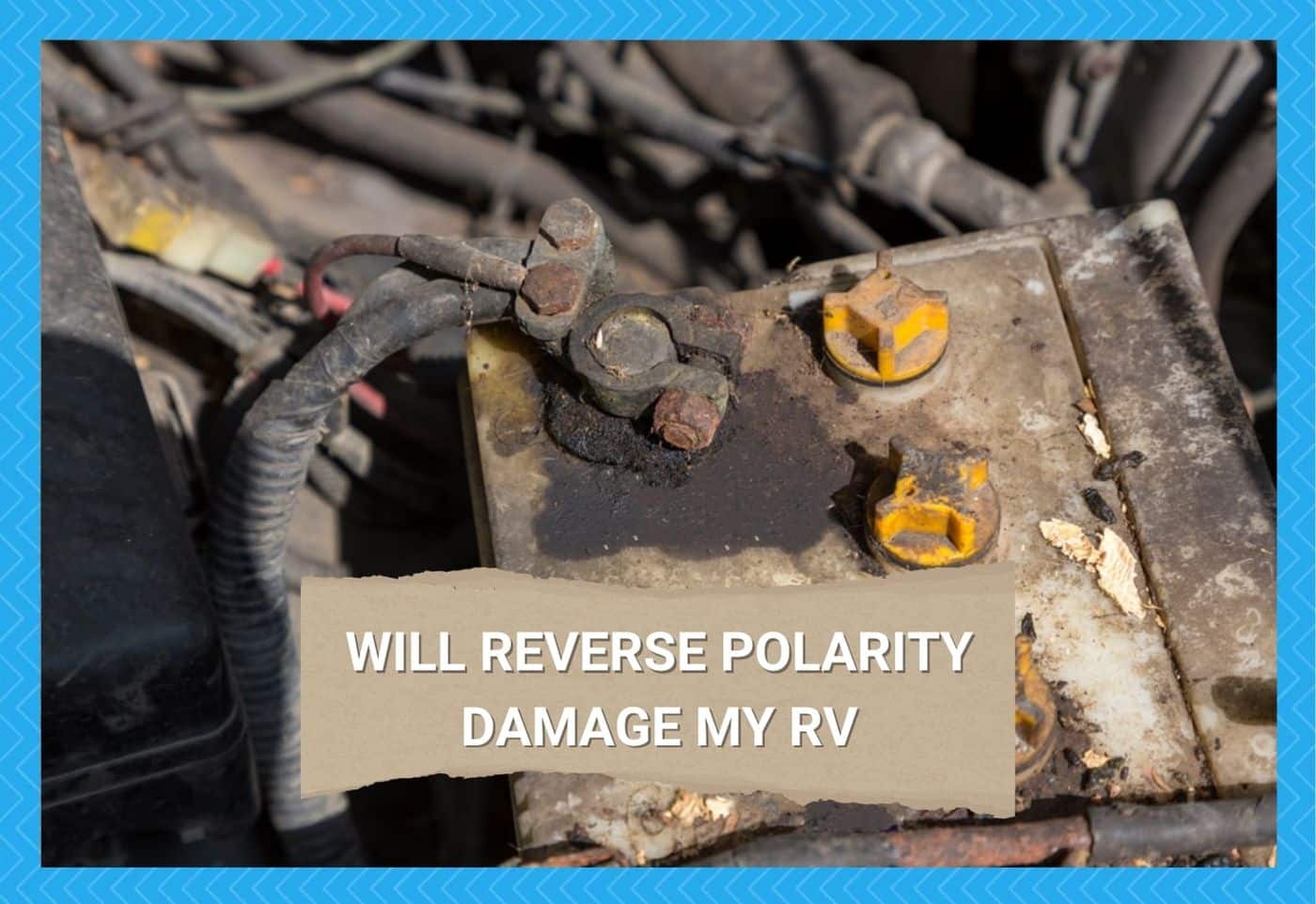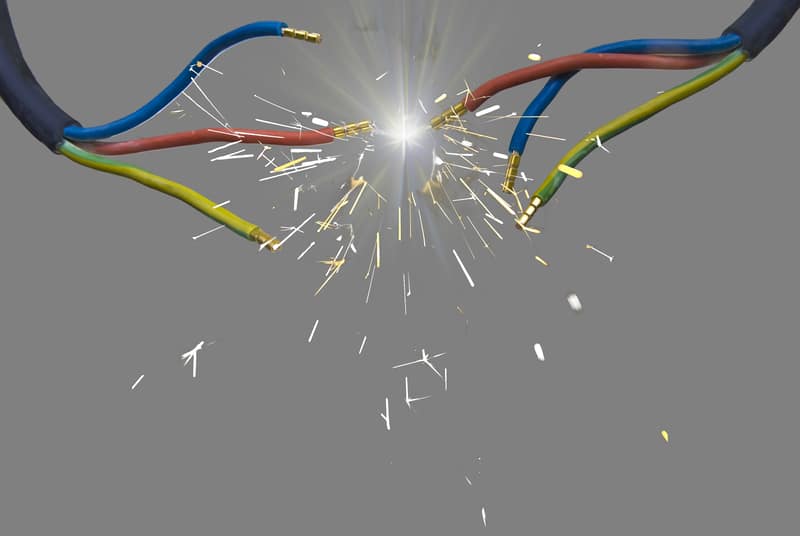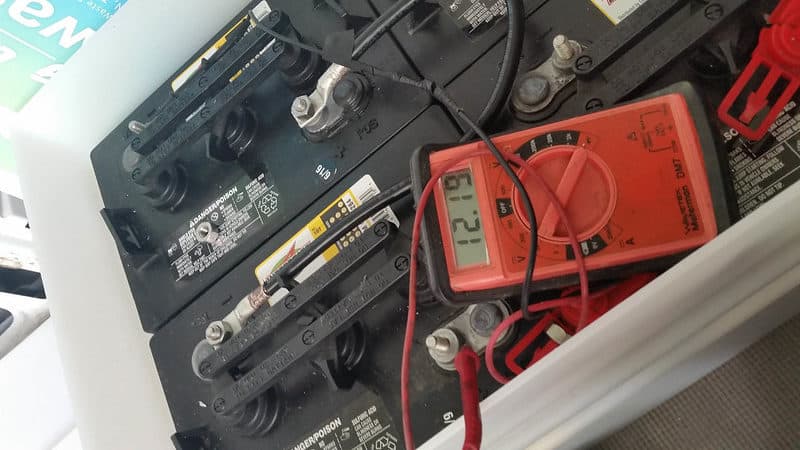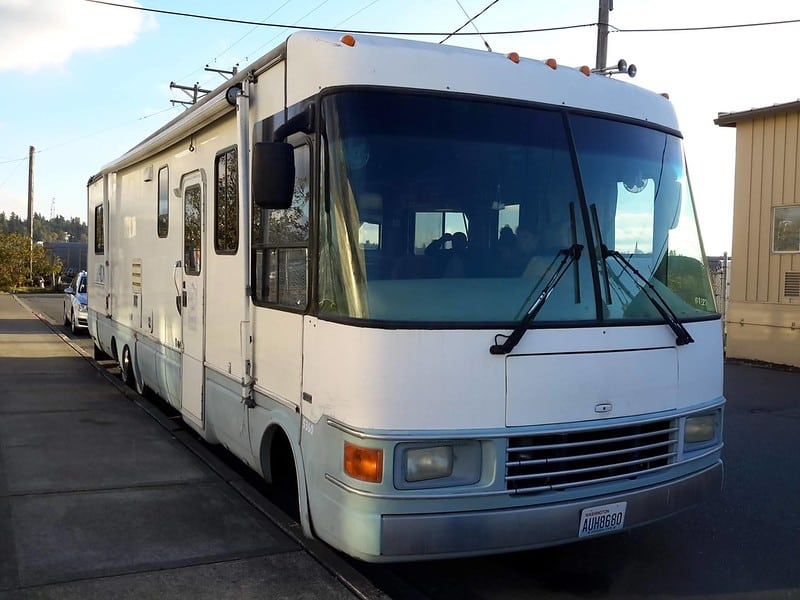
It’s common knowledge among recreational vehicle (RV) owners that an RV has two electrical systems—a 12-volt DC electrical system that powers the engine and a 120-volt AC system that powers outlets where appliances are plugged in.
However, some utilities, such as heating and lighting, are typically connected to the DC electrical system.
The DC electrical system gets its power from the RV’s battery or, in some cases, several batteries. On the other hand, a separate source, such as a generator or a solar panel, powers the AC electrical system.
Knowing where the electricity in your RV is coming from helps you understand how a reverse polarity happens and why it’s dangerous.
What is reverse polarity?
Electricity travels from a source—your RV’s battery or generator—through a circuit and back.
There are two wires in which this electricity moves around: a wire with a pressure that pushes electrons into the circuit (also called hot or high-voltage wire usually covered with black or red insulation) and a neutral wire that conveys it back to the electrical system. This wiring configuration has what we call regular polarity.
There are instances when the hot wire is connected to the neutral side and the neutral wire to the hot side of a device or appliance you are trying to power.
In this case, the electrons flow out from the energy source and into the circuit in reverse. This condition is called reverse polarity.
Will Reverse Polarity Damage My RV?
The best way to understand the dangers reverse polarity poses on you and your RV is by visualizing it using an actual appliance.
Let’s take your television, for example. When you plug in your TV, you insert the two blades of the plug into the two slots of the outlet. The outlet and the plug are polarized, meaning one of the slots or blades is hot, and the other is neutral.
If your RV has a traditional wiring system, odds are the outlet slots and the plug blades are all the same size.
So, when you plug in your TV, you might unknowingly insert the hot blade into the neutral side of the slot and the neutral blade into the hot side of the slot, which we now know creates reverse polarity.
When you turn off your TV with a polarized circuit, you break the path of electrons at a point where it hasn’t entered the TV. But in reverse polarity, the electricity flows through the other end of the circuit.
So, even if you switch off the TV, electricity is still flowing through it because the switch is on the other side of the circuit.
The TV will shut down, but it will trick you into believing there’s no power flowing in it. That’s where it becomes dangerous. If this is happening in your microwave and you have no idea it is reverse-polarized, you can get electrocuted if you reach inside and touch a live connection.
Also, since electricity is trapped in the appliance and cannot return to the electrical system due to the open circuit, the appliance might overheat or short out, which leads to fire.
How do you fix reverse polarity?
To fix reverse polarity, you have to find it first. Remember that the main cause of reverse polarity is the wrong wiring in the outlet—the hot wire is connected to the neutral side and the neutral wire to the hot side.
This means that only some of your outlets may not be polarized. Of course, this is the case, assuming whoever wired your RV only made a few mistakes.
The best way to find out which outlets aren’t polarized is to do a polarity test. This is done using a multimeter or electrical tester, a device with probes that determine whether a wire is live.
Depending on the device’s design, it could either have a gauge that deflects when it detects voltage or light signals that turn on when it touches a live wire.
What should you do when you find reverse polarity in your RV?
The safest way to deal with reverse polarity is to hire a licensed electrician to fix it. Even if you have several years of experience with electrical systems, handling complex electrical issues is still risky.
A professional electrician has the experience and is also schooled, so they understand the principles governing electricity.
But what precisely do they do to fix the problem? Well, the only solution to reverse polarity is to correct your RV’s wiring. Your electrician will most likely swap the wiring in the non-polarized outlets.
However, the fix may be a little invasive and complex if you have an old RV. Older electrical systems are designed with receptacles or outlets that lack hot and neutral indicators. The same goes for old appliances.
If you check the plug of a modern appliance, you’ll notice that one of the blades is wider than the other. And on the wall of modern houses, the outlets usually come with a wide slot and a narrow one.
This design prevents you from plugging in your appliances the wrong way around. In other words, if you own an old RV, you must consider a complete makeover. As for old appliances, you can choose to replace their plugs or buy new ones.
Conclusion
Your RV is your home (or your second if you have a house). Protect it at all costs. The enemy doesn’t always come from outside. Sometimes, it’s lurking in the shadows inside your RV. Reverse polarity can burn down your entire investment and endanger your life.
You are supposed to learn everything about RVs before you decide to own one. Electricity might be the power that can take away your home, but knowledge is the power that can help you tame electricity.
However, basic knowledge of electrical systems can only help you prevent minor electrical issues from worsening. Leave the complicated matters to professional electricians.



